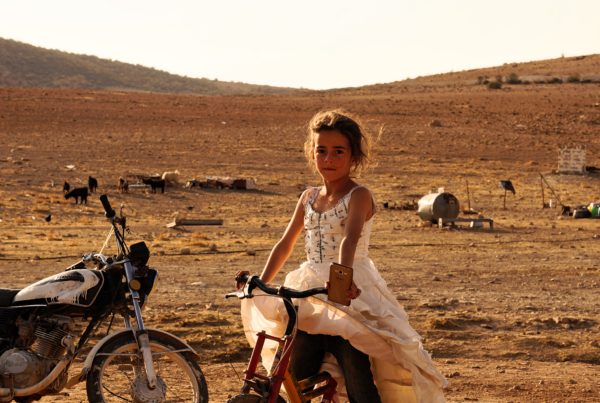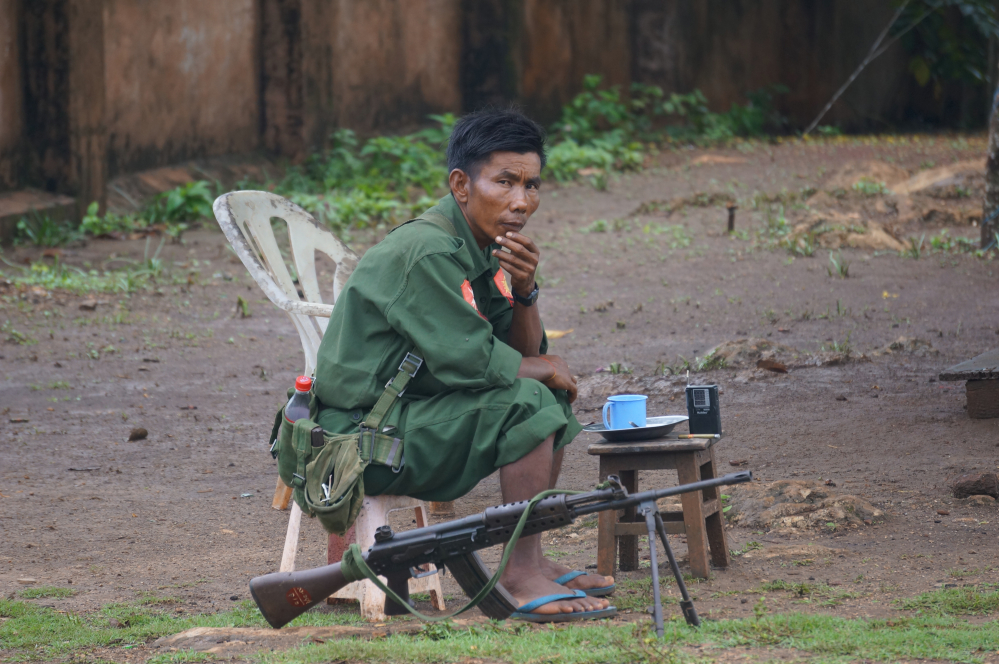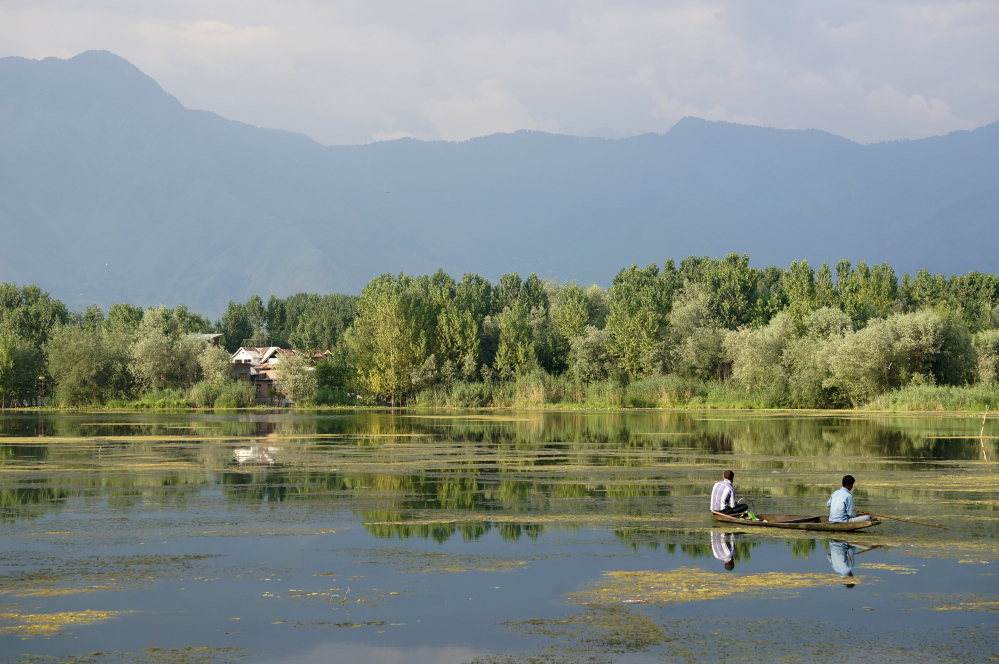A slow train takes me to Jaffna in the north of Sri Lanka. When the palm trees alongside the tracks thin I can see wet, fertile fields, farms, rice paddies and colonial houses. In the carriage next to me musicians play drums and an oboe-like instrument called the horanawa and the other passengers sing.
The atmosphere of Jaffna is somewhere between a bustling town and a quaint village. Old men and young women lurch around streets on bicycles narrowly avoided by scooters and motorbikes. It feels strange to be walking in a city that not so long ago was embroiled in a barbaric civil war. To briefly summarise (acknowledging I’m no expert and will no doubt miss the intricacies of such a complicated conflict): the 26-year conflict in Sri Lanka was a dispute between the Tamils, a predominantly Hindu minority ethnic group, and the predominantly Buddhist Sinhalese, the majority ethnic group in Sri Lanka. In 1983, a militant group known as the Liberation Tigers of Tamil Eelam (the LTTE or Tamil Tigers) started a conflict with the Sri Lankan government. The LTTE believed the government discriminated against the Tamil people and their goal was to create an independent Tamil state called Tamil Eelam in the heavily Tamil-populated areas of the north and east of Sri Lanka. Over the next three decades, the LTTE would be listed as a terrorist group in 32 countries including the United States due to their ruthless tactics, including suicide bombings, while Sri Lankan governments and military would be accused of war crimes and human rights abuses. The UN estimates at least 40,000 civilians died in the closing stages of the conflict and the Rajapaksa government and military have been accused of involvement in the massacres of thousands of innocent Tamil civilians and members of the LTTE during the culmination of the war in 2009.
Despite the war finishing in 2009, Tamil people continue to leave Sri Lanka and make the dangerous journey to Australia by boat.
“In 2012, more than 6,500 Sri Lankan boat people arrived in Australia — an increase of thirty times over previous years,” says this article published by the Conversation.
That increase in arrivals played a large part in Australia’s reintroduction of an offshore detention centre system. In Australia, you could be forgiven for thinking Sri Lanka was a safe country. In 2013, Tony Abbott’s Coalition government donated two navy ships to Sri Lanka as part of an agreement which aimed to combat people smuggling and ‘stop the boats’. Then in 2014, then Prime Minister, Tony Abbott, praised Sri Lanka as a “society at peace”. In July 2015, I visited Sri Lanka to find out why people were continuing to leave a country that our government was telling us was safe.
Before I arrive in Sri Lanka, I am advised to be cautious by Sri Lankan-Australian friends of mine. Civil war tensions still run high and many disputes have not been resolved. However, I find a number of people willing to talk to me about the war and the progress of the country since 2009.
“What do you think of Jaffna?” my friend, Chanka, asks me with a certain amount of pride and a smile that suggests he already knows what my answer will be.
“Superb, no?” Chanka answers for me.
I admit that I was expecting more post-civil war depression.
“Eye-view infrastructure,” Chanka’s grandfather, Nava, calls it. He is a white-haired, white-moustached man of seventy years, bent over in his chair and hard of hearing. He speaks well-pronounced, dignified English. “The Sinhala government provided immediate infrastructure to hide the war and nothing else. They don’t care about us. I won’t talk about politics, but that’s the truth.”
Chanka was born in Jaffna in 1988, he is the same age as me, and until 2009 he had only ever known civil war.
“We used to hide in our bunker every few days and wait for the bombing to stop,” Chanka says. “One time a shell landed right next to me but didn’t explode.”
Between homes and shop buildings on Jaffna’s main roads there are destroyed houses not yet repaired: vacant skulls that stare onto the street.
“We moved out of central Jaffna when the bombing got too bad. When we moved back to our house the roof was destroyed and the house was buried in rubble,” Chanka says.
Despite stating an unwillingness to talk politics, Nava is happy to tell his story.
“It all started in the fifties when they made Sinhala the national language,” Nava says. “It was the worst decision they could have made. Before that, English was the national language. It was fair and it improved our education. Once we changed to Sinhala, Tamils couldn’t get the best jobs and we were disadvantaged in education. We didn’t speak Sinhala. People stopped learning English and couldn’t work abroad.”
Nava is referring to the “Sinhala Only Act” of 1956 and a period of controversial legislative oppression of ethnic minority groups in Sri Lanka by the Sinhalese majority that occurred directly after independence from British colonial power.
“We supported The Boys,” Nava says, referring to the LTTE. “The government were trying to isolate us. The shame of it was I was too old to fight.”
“The LTT were supported by all Tamils,” Chanka tells me. “They had their own banks and their own system of government with departments and ministers. They had a women’s army too. They used to smuggle weapons in and they made their own weapons too, things like explosives. They even made their own submarines. But they did some bad things. They forced people to fight for them at the very end of the war when they needed the manpower.”
I found Chanka’s claim about submarines unbelievable, so I checked it out. Al Jazeera reported that the Sea Tigers’ (the LTTE navy) attempts to build submarines failed when their base in Thailand was discovered, although they did possess radar-evading stealth boats. There are photos online of what claim to be LTTE submarines. They look like death traps.
“Chanka was too young to really understand the war,” Nava says.
He speaks with such expression that his whole body shakes with his head.
“War for us was constantly moving. We never knew when or where the next shelling would happen. We would evacuate to bunkers or temples. It was impossible to make a living. During the height of the war it became too dangerous to have our children around. We sent them away.”
Nava starts to cough and gasp for air. Talking about the war makes him agitated. When he has stopped coughing he resumes his story.
“One day The Boys forced us to evacuate Jaffna. We had to walk 30 miles to escape. We were lucky we had a place to stay with a friend. Many people didn’t have that. We had a big house in Jaffna. When we left, 5 families used our place for storage. When we came back the whole house had been raided. By the Sri Lankan Army, the Indian Army and The Boys. They’d all had a go. Anyway, we lost the war, what more do you want to know?”
I visit a friend’s family in Vavuniya, 140 kilometres south of Jaffna. The family are extremely poor, they live in a bare concrete home, but they welcome me with food and a bed. Tharmendra is my age. He tells me that during the war they couldn’t leave the house after 6pm because it was too dangerous. The family was fearful of the Sinhalese military, the LTTE, and paramilitary groups.
“Some Tamil paramilitary groups used to fight for the LTT but then they turned against them,” Tharmendra tells me.
Tharmendra tells me that during this time, the paramilitary groups were so powerful that often people took complaints to them instead of the police. He says that the Sinhalese were too scared to go to Vavuniya. The rice paddy just outside their house was the site of a massacre and mass grave, according to Tharmendra.
“There were 1,000 people killed there,” he says.
Thamendra tells me his father was killed in Vavuniya during the war. It is clear that his family’s experience of the war and opinion of the Tamil Tigers was very different to Chanka’s family. I am not surprised to hear of residual civil war tension in the north of the country. It has only been six years since the culmination of the brutalities. But there is much more to learn about Sri Lanka. Stay tuned for more insights into post civil war Sri Lanka.


